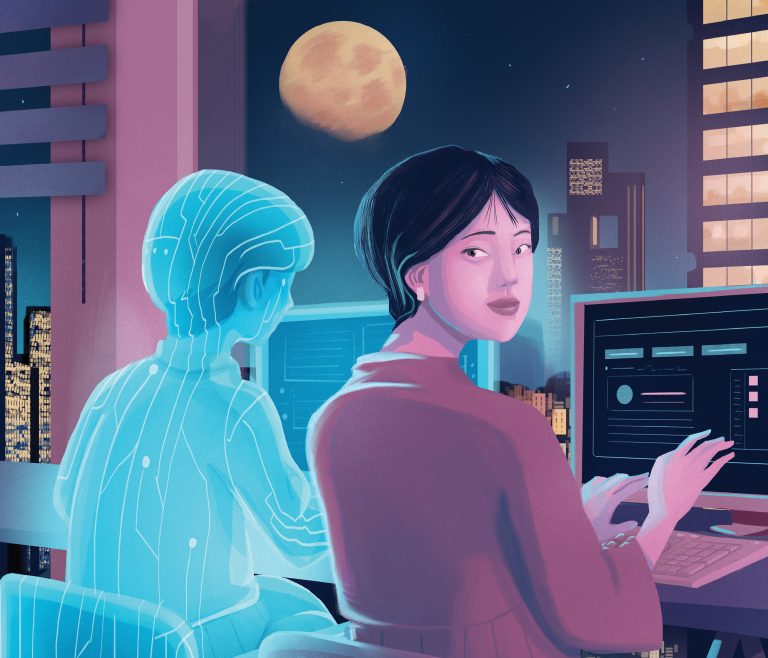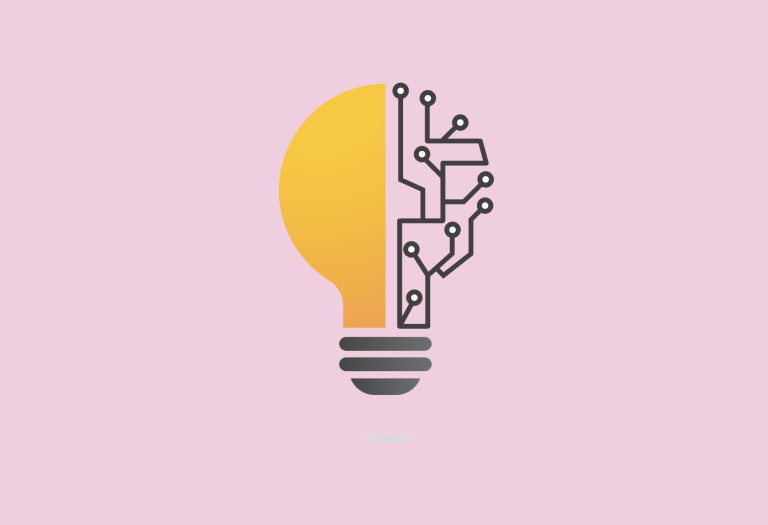Inside a warehouse in an industrial estate in Tai Po is a farm producing 150 tonnes of vegetables a year. It seems like an unlikely location for agriculture, but Farm66 is a pioneer of indoor factory farming in Hong Kong.
The group uses a range of “agri-tech” solutions to convert 20,000 square feet of indoor space into a farm through its patented multi-layer vertical planting structure.
The environment is strictly controlled, from the amount and spectrum of light that the plants receive from a special LED light system through to the volume of water and nutrients distributed to them. Everything is monitored through sensors connected to a cloud computer system.
Farm66, whose products are available in City’super and Sogo, claims to use 90 percent less water, consume 70 percent less energy and emit 60 percent less carbon than traditional farming methods. It also produces its crops using 85 percent less farming space.
The world’s population is forecast to increase from 7.7 billion now to 9.7 billion by 2050, according to the United Nations. As the population increases, agricultural methods are having to change, with farmers turning to technological solutions to find ways to maximize the amount of food they can produce with the minimal level of inputs.
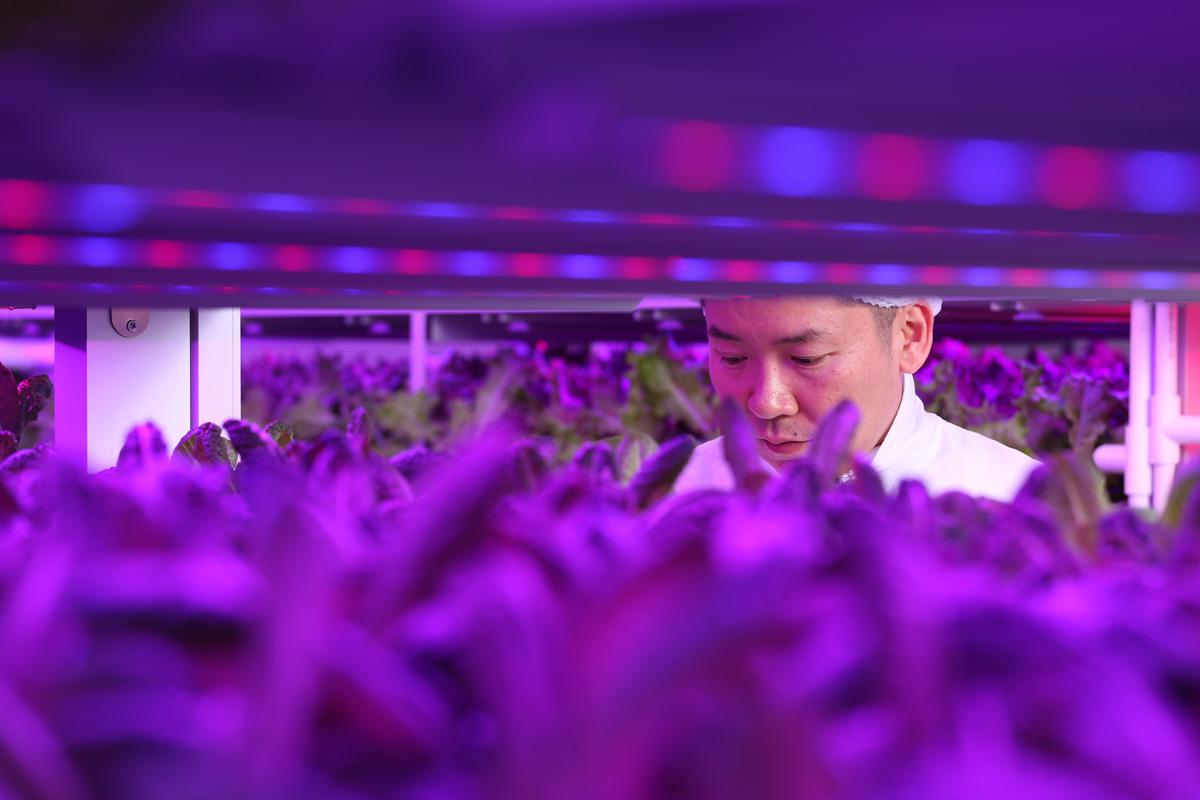 Gordon Tam, pictured here, is Founder and Chief Executive Officer of Farm66, an urban farming company based in Tai Po. It claims to use innovations such as “Indoor Aquaponics Farming Eco-system” and “Cloud-based Farming Parameters monitoring,” to grow quality vegetables locally and efficiently.
Gordon Tam, pictured here, is Founder and Chief Executive Officer of Farm66, an urban farming company based in Tai Po. It claims to use innovations such as “Indoor Aquaponics Farming Eco-system” and “Cloud-based Farming Parameters monitoring,” to grow quality vegetables locally and efficiently.
The case for change
Not only will there be more people to feed, but as incomes rise, the amount and quality of food people consume will also increase. At the same time, climate change and urbanization are reducing the amount of land available for farming.
“As we reach towards nine billion people on the planet, more people will be needing food but with soil erosion, rising water levels, and arable land being increasingly used for industry and housing, we will have to produce up to 60 percent more food, with less space available. Farming models have to change,” says Ben van Delden, Head of Markets and Agri-Food Tech Sector Leader at KPMG Australia.
He adds that the situation is leading to a focus on alternative farming methods that use less land, such as vertical farming systems and smart farming, and less inputs, including water, pesticides and nutrients. “I think we will see a rise of these factory farming systems where food is produced indoors more than outdoors. We will also see more integrated food production systems, where we have clarity around the supply, timing the harvest and products all the way up through the supply chain,” van Delden says.
“I think we will see a rise of these factory farming systems where food is produced indoors more than outdoors.”
Alongside the need to produce more food, another pressing issue is how to make agriculture more environmentally friendly. Greg Meyers, Chief Information and Digital Officer at Switzerland-based Syngenta, which produces agrochemicals and seeds, points out that the Intergovernmental Panel on Climate Change report, released in August this year, said agriculture was responsible for 23 percent of humankind’s greenhouse gas emissions, highlighting the needs for farming to become more sustainable.
Van Delden says: “Smart farming allows us to be more precise with what we are doing and make more informed decisions about using just enough inputs to get the right outputs, which means we can have a lighter footprint on the environment.” He adds that reducing the environmental footprint of agriculture is also likely to involve producing food closer to where it is going to be consumed in order to cut down on transport-related emissions.
The rise of factory farms
With these factors in mind, factory farms, such as Farm66, are likely to become increasingly common.
To minimize its inputs, Farm66 has set up what it calls an “aquaponic eco-cycle,” with fish reared in tanks underneath its multi-layered crop growing system.
Microbes are used to convert waste from the fish into fertilizer for the plants. The plants filter dirty water which is then returned to the fish tanks. Because of the carefully controlled environment, which is monitored through the cloud, the farm is free from pesticides and heavy metals, while the plants are fed with natural nutrients rather than fertilizers.
Gordon Tam, Founder and Chief Executive Officer of Farm66, says: “This Indoor Aquaponics Farming Eco-system is self- contained, contamination-free and environmentally friendly. It is free of weather impact, bird problems, pests and bacteria, as well as huge space requirements, providing the solution to traditional agriculture problems.” He adds that through its data-monitoring system, Farm66 can also keep track of and improve the quality and quantity of its production.
Sustenir is another urban factory farm using smart farming techniques to maximize its output. It has a 10,000 square foot farm in Singapore and has recently expanded to Hong Kong. “We control the environment, such as the air, water and lighting, to grow produce that doesn’t grow in hot climates, like kale and strawberries,” Kaye Villar, Regional Brand Manager at Sustenir, says.
The farm uses vertical stacking to optimize its space, and has developed its own technology, including Helios LED lights, to maximize its yields through providing plants with the optimum inputs they need. “Sustainability is at the heart of our company. By growing produce indoors, we get to regulate water and electricity, ensuring that we do not use more than we need,” Villar says.
He adds that growing crops indoors also lessens soil degradation and pesticide runoff. “We can grow 100 percent clean produce, free of pesticides, insecticides, soil and environmental pollutants,” he says. He points out that although the number of crops that can be grown indoors is currently limited, Sustenir is constantly developing its technology to expand into new products.
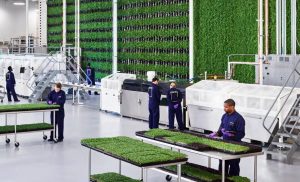 .
.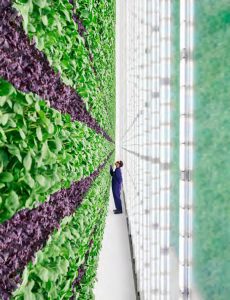
Plenty is a vertical farm based in Silicon Valley. The images above show “Tigris” its largest farm where robots put seedlings in vertically hung planters. The planters move along a wall of LED lights for 10 days, and are then put through a harvesting machine that shaves off the leafy greens, according to Reuters.
Growing use of technology
The use of technology is also increasing among more traditional farms to help them boost their yields, with everything from drones to artificial intelligence to robots being incorporated into the farming process. “The potential of technology is fantastic. I think we are very much on the early side of the S-curve on this and I think we will continue to see newer applications and more advanced uses of technology as we continue to progress,” says Rob Dongoski, EY’s Global Agribusiness Leader. “The advantages are pretty apparent: better yields, better sustainability, smarter uses of chemicals and fertilizers.”
Shenzhen-based drone maker DJI has recently created a drone specifically aimed at precision agriculture management. The drone combines data from six separate sensors to measure the health of crops, from individual plants to entire fields, as well as monitor weeds, insects and different soil conditions. DJI claims the drone will help farmers improve crop yields, cut costs and monitor their land more easily.
The market for agricultural drones is expected to grow from US$1.2 billion this year to US$4.8 billion by 2024. “Imaging drones have already been adopted by large-scale farmers in the United States, Brazil, Russia and China. More than 40 million hectares are managed digitally worldwide via a Syngenta digital tool. We predict this will double by the end of 2020,” says Meyers at Syngenta. He adds that using drones is just the start of the technological applications that can be applied to farming. “The true potential of things like quantum computing, for example, are still to be realized.”
When drones advance to the point where they can actually carry material, Dongoski thinks they could become an applicator in the field, alongside existing equipment.
In Australia, robotics specialists from the University of Sydney have developed a robot, dubbed RIPPA, which is able to identify weeds among crops and shoot them with a micro-dose of weedkiller. Mark Calleija, a systems engineering specialist who helped construct the robot, says: “The technology can be used to automatically apply the correct dose of fluid required anywhere on the farm at high speed.” The robot is currently being used in trials to see if it can identify which plants are struggling and which are thriving and apply varying doses of fertilizer accordingly.
Van Delden expects technologies such as robotics and autonomous systems to replace jobs in farming. “We know that 41 percent of the roles in agriculture in Australia will be impacted by technology in the next 10 years. The major contributor of that impact, at 30 percent, will be through automation. Some of that will be roles where part of what that person was doing is replaced by a robot and they will be doing other tasks. I think we will see a dramatic shift in the type of work people perform in the production of food,” he says.
Understanding new risks
Dongoski cautions that new models will also lead to new risks for the agricultural industry which accounting professionals will need to understand in order to advise their clients appropriately. “Traditional sales models tend to follow basic revenue matching principles. In an outcome-based or risk-based relationship, there will need to be strong methodologies to account for reserves for both upside and downside. These methodologies may require use of agronomists, or crop scientists, and sophisticated algorithms accounting for weather and other key variables,” he says.
Van Delden warns that the increased use of technology could have regulatory consequences for the industry. “Regulation could really improve as a result of these technologies. Historically, people have been getting away with farming systems that have a heavier footprint than they should.”
He adds that the increased transparency the use of digital technology creates also enables consumers to see what is happening at remote locations. “We are talking about a sector that has previously done things outside of the eye of the consumer. Is the industry ready to have how it produces its food products presented to the consumers of those products?
“Transparency will highlight the mistreatment of people as well as animals and the environment. I think that is a positive thing, but it could lead to higher costs,” he says.
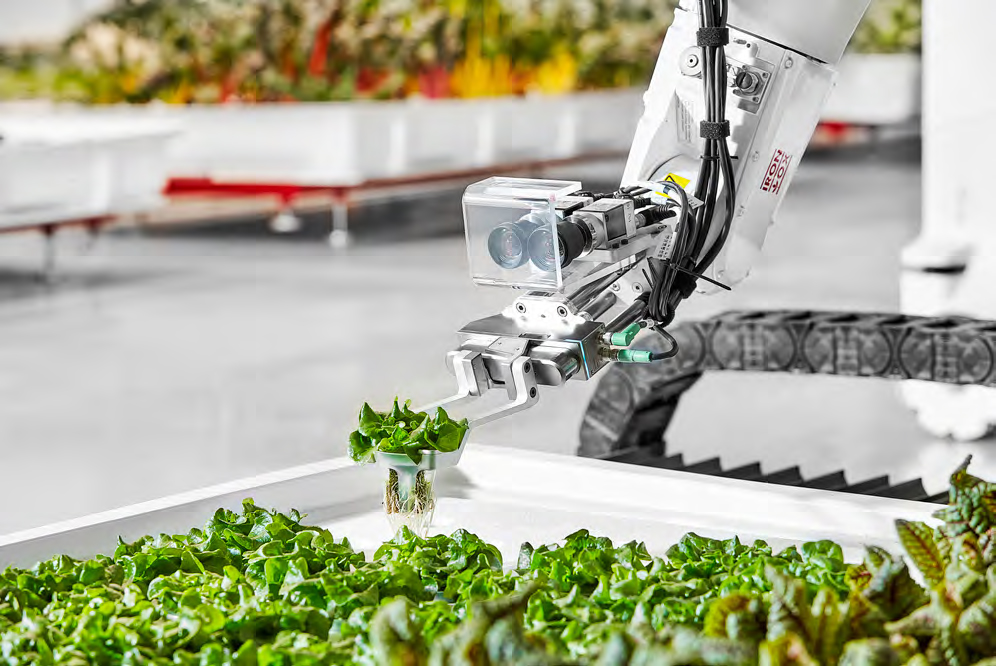 Agri-tech start-up Iron Ox, based in San Francisco, launched its first autonomous indoor farm last year. Its engineers use proprietary robot systems to grow roughly 26,000 heads of lettuce, leafy greens, and herbs each year in hydroponic vats.
Agri-tech start-up Iron Ox, based in San Francisco, launched its first autonomous indoor farm last year. Its engineers use proprietary robot systems to grow roughly 26,000 heads of lettuce, leafy greens, and herbs each year in hydroponic vats.
Growing investment opportunities
As farming practices modernize, the “agri-tech” sector has caught the eye of investors, particularly venture capital funds. Sustenir recently completed its first round of series A funding, raising SG$22 million to fund its expansion. Investment in “agri-food tech” reached a record US$16.9 billion in 2018, a 43 percent year-on-year increase, with 1,776 unique investors taking part in 1,450 deals, according to agri-tech VC company AgFunder. Growth in investment was seen at every stage, except for series A in 2018, with the average deal also getting bigger.
KPMG has also observed growing interest in the sector from investors, with venture capitalists particularly attracted to companies using technology and innovation to provide more scale, sustainability and predictability in agriculture, helping to overcome some of the unpredictability the sector faces as a result of weather, pests and diseases and fluctuating commodity markets. Companies that are harnessing technology to boost production or crop yields, while reducing the financial and environmental cost, are also in favour.
While the United States continued to dominate the global agri-food tech investment landscape in 2018, China was the second most active market with firms in the sector raising US$5.8 billion across 283 deals with 318 investors. The country’s agri-food start-up scene is dominated by companies operating downstream, with entrepreneurs focusing on meeting the demands of China’s growing middle class, as well as its lower income population, according to AgFunder. But 2018 also saw an increase in upstream start-ups closer to the farmers themselves, with e-grocery services helping to improve supply chains and giving farmers access to markets that were not previously available to them.
“Agriculture is an industry where a lot of change is underway,” says Dongoski. “It is an unprecedented time. There is a real shift in the mentality and all the stakeholders are affected by this.”
CPAs managing the change
The changing face of farming creates interesting opportunities for CPAs both in terms of helping their clients harness these trends and in increasing the services they provide to them. “Accountants will need to keep pace with the change and help their clients understand the use of technology and what the impact will be on their business,” says Rob Dongoski, EY’s Global Agribusiness Leader. “I think if they get too far behind the curve they are going to have to play catch up and may not be as relevant as a service provider.”
He adds that it is important accountants really understand their clients’ business to be able to serve them in the best way. “We are working on opportunities in this industry across all the different service lines that we offer, not just traditional accounting and tax, but also in the consulting and transactions,” he says.
He thinks the adoption of technology in farming will drive new business models, which CPAs could advise on. “I think there are a lot of opportunities in the inventory area, both on tracing inventory and matching principles around the inventory process,” he says. “The way crop inputs retail in the future could also be very different from a business models standpoint, so I think accountants will be required to think through the various policy changes they will need to undertake to account for these new business models.” He adds that while ownership traits are not likely to change dramatically, as farms increase in complexity and sophistication, seed retailers will also have to understand the same business concepts on the minds of farmers, not just the features and functionality of their seeds.
“The way crop inputs retail in the future could also be very different from a business models standpoint, so I think accountants will be required to think through the various policy changes they will need to undertake to account for these new business models.”
Ben van Delden, Head of Markets and Agri-Food Tech Sector Leader at KPMG Australia, thinks there could be an increase in issues around food fraud and counterfeit products in the future as more pressure is put on resources. “I think the level of confidence that people have is going to decrease rather than increase,” he says. As such, he says accountants may find themselves using the same disciplines of assurance that are typically applied to financial statements and processes to build confidence and trust in the food supply chain.
The other role he thinks accountants will play relates to the integrity of data. “We are going to need a level of integrity to be applied to more and more information about what is being produced, what is likely to come to market, how much will come to market, what the value of it is and what the quality of it is,” he says. “It will require the ethics and integrity of the accounting industry to really influence how contracts are written and how we honour and look after the data collected from our supply chain partners and don’t exploit it without permission.” He adds that the insights production systems are collecting increasingly have a value, but this value is not currently attributed to the farmer.
Van Delden thinks new farming techniques could also have an impact on commodities trading and capital markets. He explains: “The degree of precision that can be engaged from a satellite will really transform the insight around what crop is grown in what location, what is the viable production and the expected yield, and the harvest timing of that crop.
“If you can get that information remotely and it is about a traded commodity, then all of a sudden you have an advantage over the market and can start pricing futures contracts with that information.”










